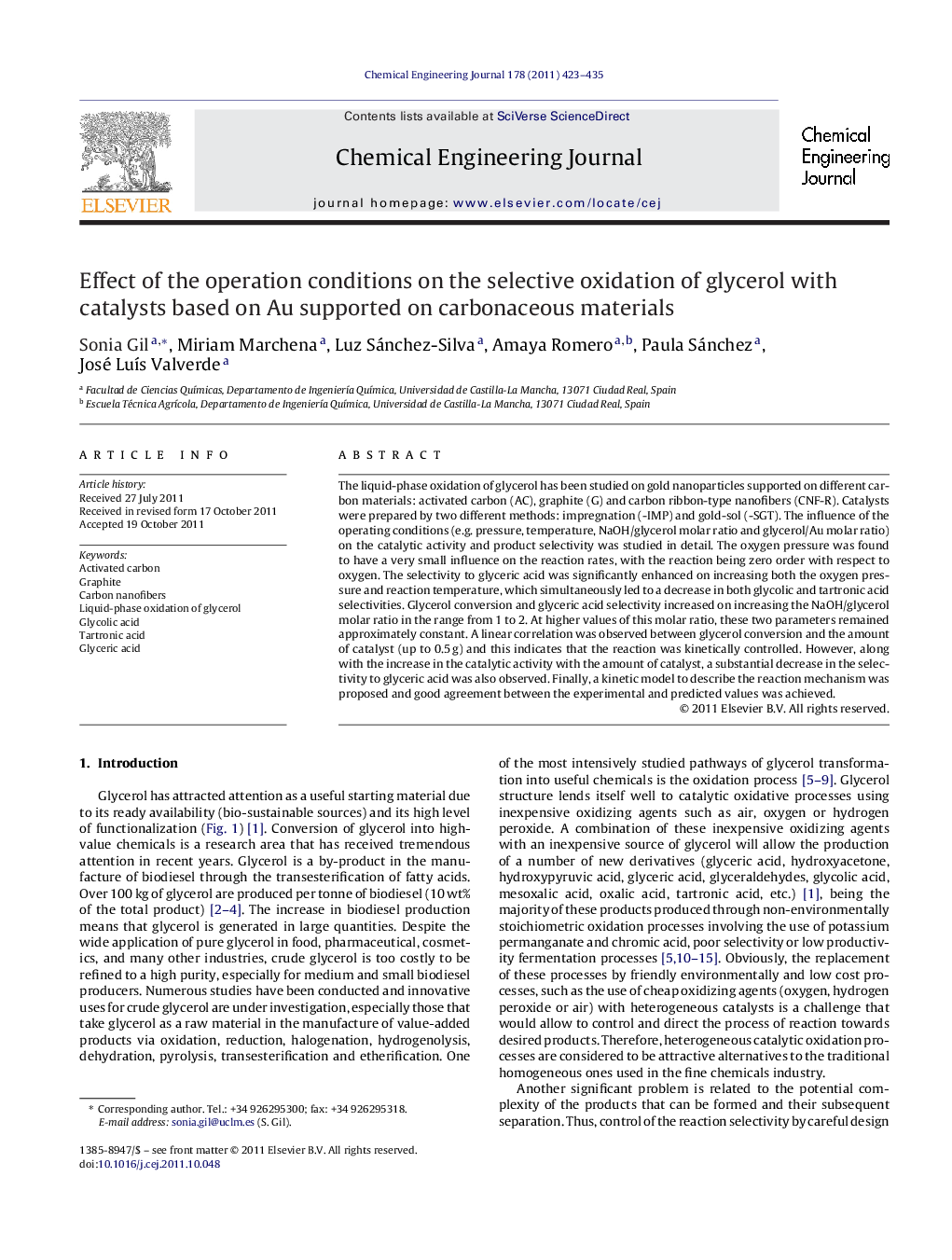| کد مقاله | کد نشریه | سال انتشار | مقاله انگلیسی | نسخه تمام متن |
|---|---|---|---|---|
| 150489 | 456450 | 2011 | 13 صفحه PDF | دانلود رایگان |

The liquid-phase oxidation of glycerol has been studied on gold nanoparticles supported on different carbon materials: activated carbon (AC), graphite (G) and carbon ribbon-type nanofibers (CNF-R). Catalysts were prepared by two different methods: impregnation (-IMP) and gold-sol (-SGT). The influence of the operating conditions (e.g. pressure, temperature, NaOH/glycerol molar ratio and glycerol/Au molar ratio) on the catalytic activity and product selectivity was studied in detail. The oxygen pressure was found to have a very small influence on the reaction rates, with the reaction being zero order with respect to oxygen. The selectivity to glyceric acid was significantly enhanced on increasing both the oxygen pressure and reaction temperature, which simultaneously led to a decrease in both glycolic and tartronic acid selectivities. Glycerol conversion and glyceric acid selectivity increased on increasing the NaOH/glycerol molar ratio in the range from 1 to 2. At higher values of this molar ratio, these two parameters remained approximately constant. A linear correlation was observed between glycerol conversion and the amount of catalyst (up to 0.5 g) and this indicates that the reaction was kinetically controlled. However, along with the increase in the catalytic activity with the amount of catalyst, a substantial decrease in the selectivity to glyceric acid was also observed. Finally, a kinetic model to describe the reaction mechanism was proposed and good agreement between the experimental and predicted values was achieved.
► The product distribution for the oxidation of glycerol is clearly dependent on the reaction conditions.
► The oxygen pressure was found to have a very small influence on the reaction rates.
► The selectivity to glyceric acid was significantly enhanced by an increase of reaction temperature.
► Glycerol conversion and glyceric acid selectivity increased when the NaOH/glycerol molar ratio.
► For amounts of catalyst up to 0.5 g, the reaction was reaction-rate controlled.
Journal: Chemical Engineering Journal - Volume 178, 15 December 2011, Pages 423–435